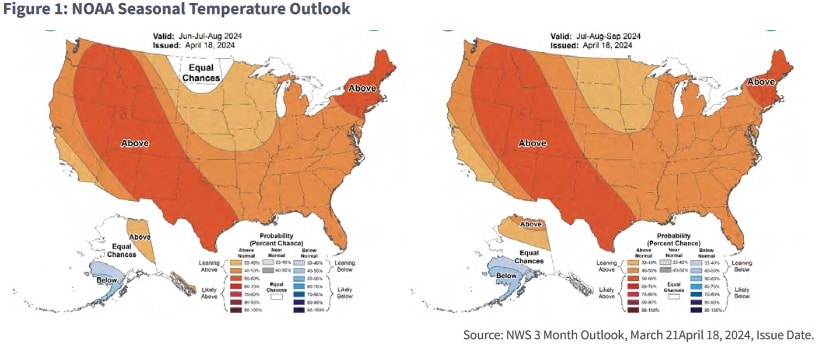New Data Centers Significantly Contribute to U.S. Electricity Demand Growth: FERC Summer Assessment

The Federal Energy Regulatory Commission has released its annual summer market and reliability report, providing an outlook for energy markets and electric reliability for the period of June-September 2024. The report forecasts warmer-than-average summer temperatures that increase electricity demand and adequate generating availability, although extreme conditions could challenge specific regions. Data center consumption has been one of the major drivers behind the recent growth in electricity demand due to digitalization and data-driven technologies, according to the report.
Electricity consumption is expected to be 2.7 percent higher in summer 2024 than last summer for the continental U.S. Moreover, total electricity consumption is expected to be 4.4 percent higher this summer than the average over the past five summers. The expected larger consumption is attributed to forecasted warm weather, strong economic growth, and notably, construction of new data centers in many regions of the U.S. Data center power consumption is projected to increase from about 19 gigawatts (GW) in 2023 to about 21 GW this year. Nationwide, data center demand is anticipated to reach 35 GW by 2030, up from 17 GW in 2022.
Wholesale electricity prices are expected to be lower in most regions compared to last year. As of May 1, 2024, the Henry Hub futures contract price for summer 2024 averaged $2.25 per million British thermal units (MMBtu), nine percent lower than last summer’s settled prices. The U.S. Energy Information Administration attributes the lower prices to relatively high levels of natural gas in inventory, up 23 percent from last year, following reduced natural gas consumption in the residential and commercial sectors last winter. Summer natural gas production is forecast to see a slight decline of 1.6 percent relative to last summer and demand is expected to be 1.7 percent above summer 2023 levels. Natural gas consumption for electricity generation is projected to remain steady at around 45 percent of total gas demand. Increased generating capacity from solar and battery storage resources is expected to bolster available generation to meet demand and contribute to lower electricity prices this summer.
The North American Electric Reliability Corporation forecasts adequate generating resources across all regions to meet projected demand and operating reserve requirements under normal conditions. However, some areas continue to face risks of power supply shortfalls during extreme conditions and may need to depend on operating mitigations. Drought conditions may strain power supplies reliant on water and wildfire disruptions to the bulk electrical system and physical security concerns may further impact power generation.
EnerKnol Pulses like this one are powered by the EnerKnol Platform—the first comprehensive database for real-time energy policy tracking. Sign up for a free trial below for access to key regulatory data and deep industry insights across the energy spectrum.
ACCESS FREE TRIAL